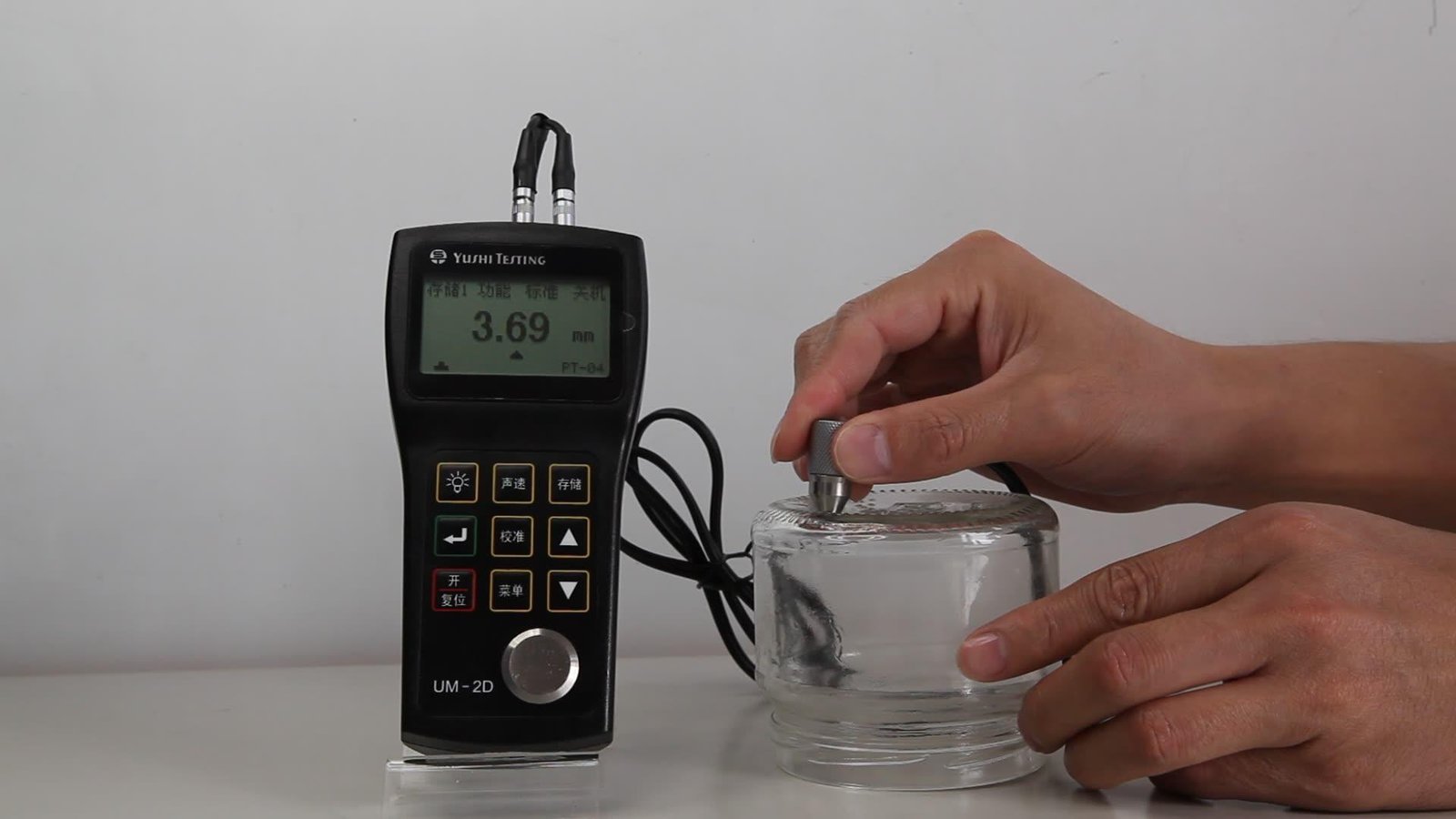-
Feed de Notícias
- EXPLORAR
-
Blogs
What Is Ultrasonic Thickness Testing?

In industries where material integrity is crucial—like construction, manufacturing, and marine engineering—accurate thickness measurement is essential. Whether checking for corrosion, wear, or quality control, precise data ensures safety and efficiency.
This is where ultrasonic thickness testing (UTT) comes in. Using high-frequency sound waves, UTT measures material thickness without causing damage. It’s a game-changer for industries that require non-destructive testing (NDT). A reliable ultrasonic thickness tester helps professionals get accurate readings even in challenging environments. But what exactly is UTT, and how does it work? Let’s dive in.
How Does Ultrasonic Thickness Testing Work?
UTT is based on the principle of ultrasonic wave reflection. A probe, or transducer, emits high-frequency sound waves into the material. These waves travel through the material until they hit the opposite surface or an internal defect. When this happens, the waves reflect back to the probe, and the device calculates the time it took for the wave to travel. This time delay is then converted into an accurate thickness measurement.
Key Components of Ultrasonic Thickness Testing
To understand how UTT functions, let’s look at its main components:
1. Ultrasonic Transducer
The transducer generates and receives the ultrasonic waves. Different types of transducers exist for different materials and applications.
2. Couplant
A gel-like substance, the couplant ensures efficient transmission of sound waves by eliminating air gaps between the transducer and the material.
3. Ultrasonic Thickness Tester
The testing device processes the data received from the transducer and displays the thickness measurement.
Where Is Ultrasonic Thickness Testing Used?
UTT is widely used across multiple industries, including:
1. Oil and Gas Industry
- Checks pipeline thickness for corrosion.
- Prevents leaks and structural failures.
2. Marine and Shipbuilding
- Monitors hull thickness to detect rust and material degradation.
- Ensures vessels remain seaworthy and compliant with regulations.
3. Aerospace Industry
- Examines aircraft components for cracks or thinning.
- Prevents catastrophic failures due to weakened structures.
4. Automotive Manufacturing
- Measures sheet metal thickness in vehicle production.
- Ensures uniformity in car parts and body panels.
5. Construction and Civil Engineering
- Tests bridges, buildings, and concrete structures for wear and tear.
- Helps in structural safety assessments.
Benefits of Ultrasonic Thickness Testing
Why do industries prefer UTT over traditional measuring methods? Here are some compelling reasons:
1. Non-Destructive Testing
Unlike destructive methods that require cutting or damaging materials, UTT provides accurate readings without compromising the material’s integrity.
2. High Accuracy and Precision
UTT can measure thickness down to fractions of a millimeter, ensuring precise and reliable results.
3. Works on Coated Materials
Unlike mechanical tools like calipers, ultrasonic testers can measure through coatings, paint, and rust, saving time on surface preparation.
4. Suitable for Hard-to-Reach Areas
UTT is ideal for measuring thickness in curved, irregular, or difficult-to-access locations.
5. Fast and Efficient
UTT provides instant readings, making it a quick and cost-effective solution for large-scale inspections.
Ultrasonic Thickness Testing vs. Other Methods
Let’s compare UTT with other commonly used thickness measurement techniques.
1. UTT vs. Calipers and Micrometers
- Calipers/micrometers require direct contact with both sides of the material.
- UTT works from one side, making it more versatile for large structures like pipes and tanks.
2. UTT vs. Radiographic Testing (X-ray)
- X-ray testing is expensive, slow, and requires safety precautions.
- UTT is faster, safer, and more cost-effective.
3. UTT vs. Magnetic Particle Testing (MPT)
- MPT only works on magnetic materials.
- UTT works on a wide range of materials, including plastics and composites.
How to Use an Ultrasonic Thickness Tester
Using an ultrasonic thickness tester is simple, but following the correct steps ensures accurate and repeatable results.
Step 1: Choose the Right Equipment
Select a tester and transducer that match your material type and thickness range.
Step 2: Prepare the Surface
Clean the material to remove any dirt, rust, or coatings that could interfere with readings.
Step 3: Apply the Couplant
Spread the couplant on the surface to ensure proper sound transmission.
Step 4: Position the Transducer
Firmly place the transducer against the material. A good connection ensures clear readings.
Step 5: Take the Measurement
The tester will display the thickness instantly. If needed, take multiple readings for accuracy.
Step 6: Record and Analyze the Data
Compare the readings with industry standards to determine if maintenance or repairs are required.
Common Challenges and How to Overcome Them
Despite its advantages, UTT can face certain challenges. Here’s how to handle them:
1. Irregular Surfaces
For rough or uneven materials, use a flexible transducer that conforms to the surface.
2. Coated Materials
If coatings are affecting readings, use a UTT device with an echo-to-echo function, which ignores coatings.
3. Couplant Issues
Always apply an adequate amount of couplant and ensure consistent pressure on the transducer for accurate readings.
Future of Ultrasonic Thickness Testing
UTT is constantly evolving, with advancements making it even more effective. Some upcoming trends include:
1. AI-Powered Ultrasonic Testing
Artificial intelligence is being integrated to automate defect detection and improve data analysis.
2. Wireless and Digital UTT Devices
Modern testers now feature wireless connectivity and digital data storage, improving efficiency.
3. Robotic and Drone-Based UTT
Industries are developing automated robotic and drone-mounted ultrasonic testers for inspecting large structures like bridges and ships.
Conclusion
Ultrasonic thickness testing is a reliable, accurate, and non-destructive method for measuring material thickness across industries. Compared to traditional techniques, it offers faster, safer, and more versatile measurements, making it essential for quality control and safety assurance.
If your industry relies on precise material inspections, investing in a high-quality ultrasonic thickness tester is a smart decision. With technology continually advancing, UTT is set to become even more efficient, ensuring safer and stronger structures in the future.







